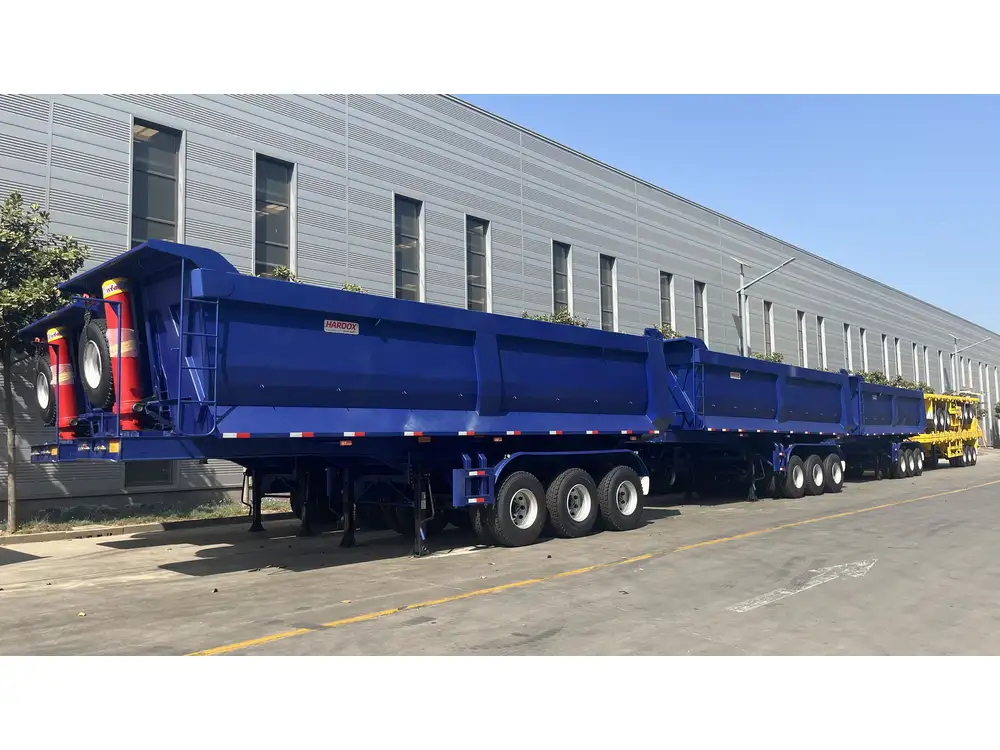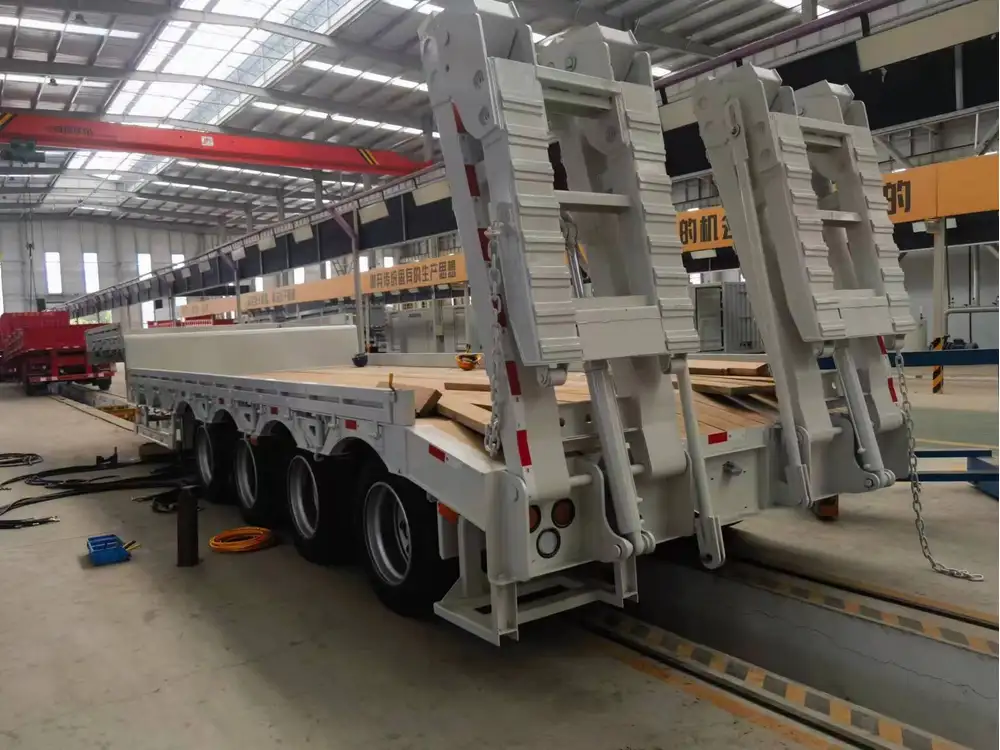When it comes to the transport and logistics industry, semi-trailers play a pivotal role in the movement of goods. One critical aspect of trailer specifications that often comes into play is the width of the trailer. This guide elucidates the finer points of trailer widths, addressing various facets of user inquiries, and ultimately providing comprehensive insights for manufacturers, transporters, and end-users alike.
Table of Contents
- Overview of Trailer Widths
- Standard Trailer Width Specifications
- Importance of Trailer Width in Transport
- Factors Influencing Trailer Width
- Types of Semi-Trailers and Their Width
- Regulations Governing Trailer Width
- Customizing Trailer Width for Specific Needs
- Common Issues Related to Trailer Width
- Comparison: Different Types of Trailers by Width
- Conclusion
Overview of Trailer Widths
The width of a trailer is an essential measurement that impacts various logistical and operational aspects of transportation. The dimensions influence cargo capacity, stability during transit, and compliance with road regulations. Understanding trailer widths helps in optimizing loads and ensuring safety on the road.

Standard Trailer Width Specifications
Typically, the standard width for most semi-trailers is 102 inches (8.5 feet). However, this can vary depending on the type of trailer and local regulations. Below are some key specifications:
| Type of Trailer | Standard Width (Inches) |
|---|---|
| Flatbed Trailers | 102 |
| Enclosed Trailers | 96 to 102 |
| Refrigerated Trailers | 96 to 102 |
| Lowboy Trailers | 102 to 120 |
| Specialty Trailers | Variable (customizable) |
Importance of Trailer Width in Transport
Understanding the significance of trailer width assists manufacturers and users in making informed decisions. Here are some crucial factors to consider:
- Load Capacity: Wider trailers can typically accommodate larger loads, which is beneficial for transporting bulky materials.
- Stability: A wider base increases stability, particularly when navigating corners or during adverse weather conditions.
- Safety Compliance: Adhering to width regulations avoids potential fines and enhances safety on the roads.
- Aerodynamics: Optimizing trailer width can improve fuel efficiency, reducing overall transportation costs.
Factors Influencing Trailer Width
Several factors dictate the width of a trailer, including:
- Type of Cargo: Certain materials or equipment may require specialized trailer widths for safe transport.
- Regulatory Requirements: Different regions have distinct regulations regarding the maximum allowable width for trailers.
- Road Conditions: Areas with narrower roads may necessitate narrower trailers to ensure both safety and compliance.
- Manufacturer Specifications: Manufacturers design trailers with specific widths to cater to particular market demands.

Types of Semi-Trailers and Their Width
Different types of semi-trailers cater to varied transportation needs. Understanding these can help in selecting the appropriate trailer for specific logistics tasks:
Flatbed Trailers
- Width: Usually 102 inches
- Use: Ideal for transporting large machinery, building supplies, and oversized loads.
Refrigerated Trailers
- Width: Typically between 96 to 102 inches
- Use: Designed for transporting temperature-sensitive goods.
Enclosed Trailers
- Width: Standard widths of 96 inches to 102 inches
- Use: Useful for protecting cargo from environmental factors during transport.
Lowboy Trailers
- Width: Generally ranges from 102 to 120 inches
- Use: Purposeful for hauling heavy equipment due to their low profile.
Specialty Trailers
- Width: Width can vary significantly based on custom design
- Use: Tailored to transport unique cargo types or specific dimensions.
Regulations Governing Trailer Width
Understanding the legal implications of trailer width is paramount for both manufacturers and users:
| Region/Area | Maximum Trailer Width (Inches) |
|---|---|
| United States (Federal) | 102 |
| Canada (Federal) | 102 |
| European Union | 102 (but can be slightly different per country) |
| Australia | 102 (some states allow up to 120 for specific trailers) |
Compliance Tips:
- Always check local and state laws to ensure compliance.
- Consider acquiring special permits if transporting oversized loads.

Customizing Trailer Width for Specific Needs
Customization of trailer widths allows for enhanced versatility when meeting specific transportation requirements. Manufacturers often provide options for tailoring widths based on client needs, enabling better load capacity, maneuverability, and compliance. Consider these customization aspects:
- Wider Trailers: For transporting oversized loads that exceed standard dimensions.
- Narrower Trailers: Helpful in regions with restricted road widths, ensuring ease of navigation.
- Adjustable Width Systems: Some manufacturers offer innovative designs that allow trailers to adjust widths dynamically.
Common Issues Related to Trailer Width
It’s critical to be aware of some common problems that can arise due to trailer width:
- Overwidth Fines: Failing to comply with width regulations can result in hefty fines.
- Increased Fuel Consumption: Wider trailers may cause additional drag, impacting fuel efficiency.
- Stability Issues: An improperly loaded trailer can lead to tipping during sharp turns.
- Compatibility with Loading Docks: Too wide trailers may struggle to fit into standard loading areas.
Solutions to Common Width-Related Issues:
- Conduct thorough route planning to avoid lanes with width restrictions.
- Implement weight distribution checks to maintain stability.
- Use GPS and route management software to navigate effectively.

Comparison: Different Types of Trailers by Width
To provide a clearer picture of how different trailers stack up against each other, an in-depth comparison is beneficial.
| Type of Trailer | Width (Inches) | Key Characteristics |
|---|---|---|
| Flatbed | 102 | Versatile for various cargo types; open design |
| Refrigerated | 96 – 102 | Insulated for temperature-sensitive loads |
| Enclosed | 96 – 102 | Protects cargo from elements; limited airflow |
| Lowboy | 102 – 120 | Ideal for heavy and oversized equipment |
| Specialty | Variable | Custom widths for unique requirements |
Conclusion
In the realm of semi-trailers, understanding trailer width is indispensable for optimizing transportation strategies. This guide serves to illuminate the various dimensions, types, and regulations surrounding trailer widths, ensuring users are well-informed for their logistical needs. Whether you are a manufacturer, transporter, or end-user, keeping abreast of these specifications is key to enhancing operational efficiency and compliance in your transport endeavors.
By addressing common concerns and offering a systematic analysis of trailer width-related issues, manufacturers can better cater to user needs, ensuring a seamless experience throughout the transport process. As we move forward, considering width in design and compliance will keep the wheels of the logistics industry turning efficiently and effectively.



